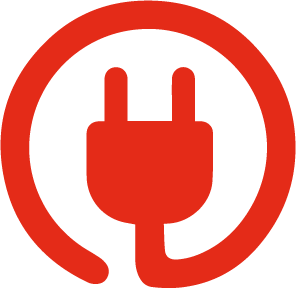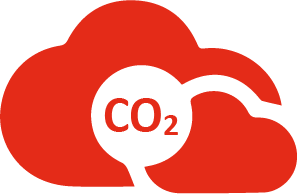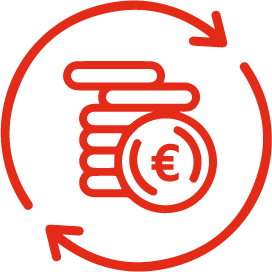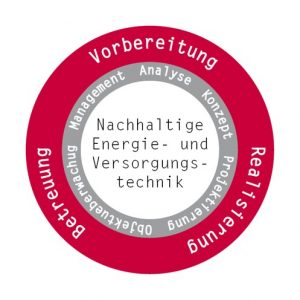Pre-study on the use of e-mobility for logistics location in Berlin
It is always necessary to develop and establish new logistics locations. In this context TOP-Energy® can be important tool for the planning phase. In the course of the 4th Wildauer logistics workshop a suitable preliminary study was carried out by the team for technology together with students of the TH Wildau. TOP-Energy® was used by the company to investigate whether it would be feasible and sensible to establish e-mobility distribution networks for a new logistics center for the healthcare industry in Berlin. For this purpose, different supply variants were compared with each other taking into account the general conditions. The aim of the time-step-based plant simulation was to determine the electricity generation costs for electromobility without creating additional energy requirements.
Results of the preliminary study

Savings of operating costs compared to the pure grid power supply
In a comparison of variants, E-Mobility could save 2.5 ct/kWh; in addition, power generating plants would remain unchanged.

Reduction of CO2 emissions
The use of an e-mobility sub-fleet would save 20% of CO2 emissions compared to a diesel fleet, and even 90% if green electricity were used.

Investment costs remain constant
When using an electric mobility sub-fleet, the investment costs would remain unchanged compared to the reference variant.
Pre-study work steps
The underlying methodology is a difference analysis of different supply variants. TOP-Energy® enables not only time-step-based plant simulation, but it also enables the illustration of complex requirements and clearly presents differences and similarities between the systems analyzed.
1. Consideration of initial situation and general conditions
For the purpose of a plausible investigation, the initial situation of the site and its general conditions were considered in the simulation. This includes a high power demand of the buildings and systems, as well as energy requirements for flushing and washing technology as well as the cooling demand.

2. Configuration of the plant technology
In order to generate capacity for fleet needs, electricity consumption had to be reduced. As potential savings, the preheating of the rinsing and washing water, as well as a cogeneration with photovoltaic or a power-heat-cold-coupling have been suggested and entered for the simulation as models in TOP-Energy® and configured.

4. Results analysis
The comparison of variants showed that the use of an electric-mobile sub-fleet with additional charging infrastructure is recommended. With this variant, costs of 2.5 ct/kWh could be saved compared to a net electricity supply. At the same time, CO2 emissions could be reduced, up to 90% with green electricity. Although an investment would have to be made in a charging infrastructure, the investment costs would be identical to a conventional energy supply and lower compared to the use of stationary batteries. The most sensible plant variants were identified as those with CHP units. By generating electricity, it was also possible to reduce the total demand for electricity in summer and cover the demand for heat as well.
5. Site planning and development recommendation
The recommendation resulting from the preliminary study was to invest in an electric mobility sub-fleet with associated charging infrastructure in order to save costs in the long term and to use and generate energy sustainably. Further optimization and flexibility potentials, for example sector coupling, could be realized during implementation. The integration of a combined heat and power plant into the supply network was also advocated in order to optimally meet the demands that arise.
Project and contact person
Ingenieure für Energie- und Versorgungstechnik
Stendaler Str. 4, Hofgebäude
10559 Berlin
Contact person: Alexander Buschmann
Mail: buschmann@tftgmbh.de
Phone: 030. 809 33 10-72

